Dances We Teach
History, Basic Moves, Steps & Songs!
They say that dance is a great way to express your emotions. While this may sound like such a cliché, the quote seems to have endured throughout the years mainly because there’s truth to it. It’s wise to choose an activity that encourages you to express your very own creativity. Now it all boils down to that one question: So you think you can dance? Definitely! And that’s because there’s a style available for anyone who wants to overcome the problem with their two left feet. As you glide across the expanse of the ballroom, you can now let your innermost emotions shine forth with a step that is truly representative of whom you are as a person. There are several styles to choose from and you need to know how each dance is unique from the other.
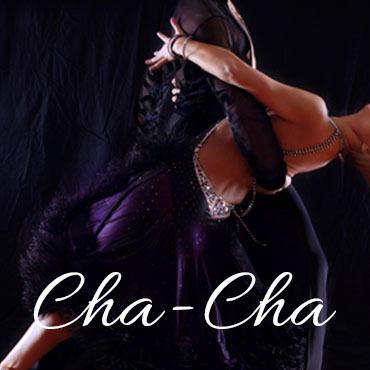
Cha Cha
Cha Cha was created from when nightclubs and dance halls slowed the tempo of Mambo music. First known as triple Mambo, Cha Cha then became the popular dance we know today. Cha Cha’s fast footwork and festive personality is why Cha Cha is still one of the most popular social dances being danced today.

Viennese Waltz
With such wonderful composers as Johann Strauss and others, the Waltz became more and more refined. The steps became smaller with the turns smoother and more compact. Adding the graceful lilt of the flowing skirts, we have today’s Viennese Waltz. It is the fastest of the Waltz tempos.
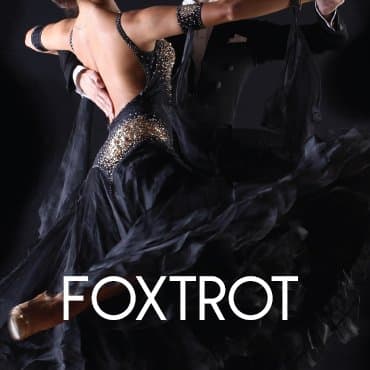
Fox Trot
Created in 1912 by Harry Fox, the Fox Trot was the first dance that permitted people to hold each other closer than arm’s length. If you think the term ‘dirty dancing’ was a product of the 80s, think again. The Fox Trot was at first to be tagged ‘indecent behavior’. Today it’s still the most popular of all social dances. Some people refer to the Fox Trot as the ‘Slow Dance’ or the ‘Two-Step’, or a ‘Conversational Dance’ because of its closeness and conversation ability at the same time. The Fox Trot is good for developing ‘smoothness’ and ‘ease of movement’.

Hustle
The record ‘Do The Hustle’ by Van McCoy, was followed by the movie Saturday Night Fever. This movie portrayal of partner dancing by John Travolta to the popular beat of top selling music from the Bee Gees and the introduction to America of the Discotheque setting, took America by storm. Flashing lights, mirrors everywhere, loud throbbing beat and high fashion were in. Today’s hustle has morphed into more of a swing style called club swing which can be seen on most dance floors when the music gets fast.
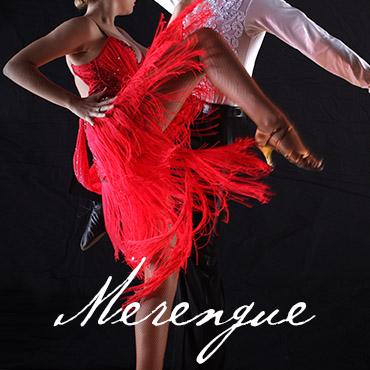
Merengue
The Merengue became popular in 1957. The Merengue is all about the hips. The hips of the couple move in sync during the entire dance. This seductive hip movement comes from the bending and straightening of the knees, not from twisting. The dancers can do slow and separate turns without letting go of their hands or by letting go of just one hand. It is thought that the Merengue’s limping steps were originally performed to honor an injured war hero. The Merengue is a “Must Have” for any Latin dance venue.
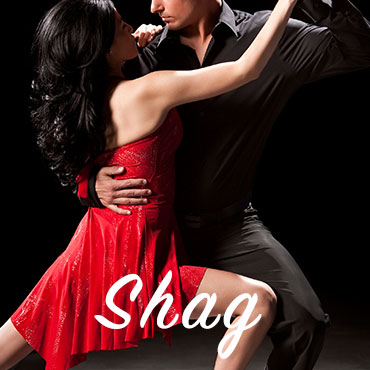
Shag
Originated in the late 50’s on the shores of Myrtle Beach, Shag has gained such a following that it is now the official state dance in South Carolina. Carolina Shag became known as ‘Beach Swing’ and was done to ‘Beach Music’ , which was basically old Motown, Blues and Oldies music. The Shag is done primarily in the Southern States such as Florida, the Carolina’s, Virginia and Georgia. The Carolina Shag has a very smooth, connected feel with your partner and the music.
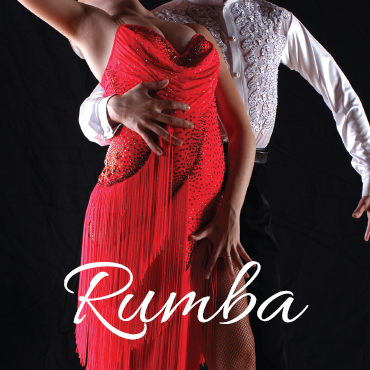
Rumba
The Rumba was originally done for amusement on the farms of Cuba. However, it became a popular ballroom dance and was introduced in the United States about 1933. In Rumba, steps are made with a slightly bent knee, which, when straightened, causes the hips to sway from side to side in what has come to be known as Cuban Motion. Rumba is one of the most romantic and popular of the social dances.
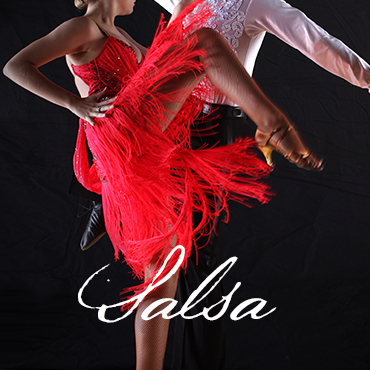
Salsa
The word “Salsa” means sauce – denoting a hot, spicy flavor. This definition describes the dance Salsa perfectly. Salsa’s fast music blended with the dancer’s wraps, spins and quick footwork make this a “Must Have” for any Latin Social Dance floor. Salsa has many different styles; Salsa on 1, Salsa on 2 and Salsa on 3.
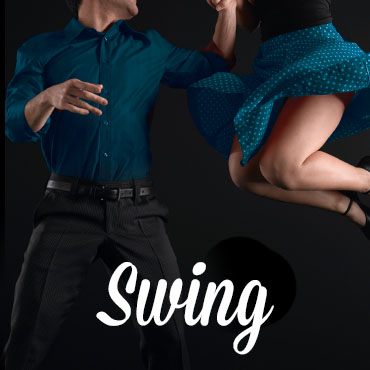
Swing
Swing is an ever popular blend of several dance styles, which include; Lindy, Ragtime, Jazz and Blues. Today it generally refers to the ballroom and nightclub version which can be danced to Rock and Roll, Country, 80’s, Pop and Social music. The swing is full of spins, turns and kicks that make it still the most popular fast dance being danced today.
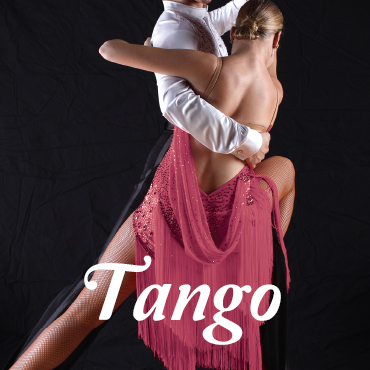
Tango
There are essentially three types of Tango: Argentine, American and International Style. Argentine Tango (Arrabalero): A dance created by the Gauchos in Buenos Aires. American Tango: The American Tango features a structure which is correlated to the musical phrasing. International Tango: This is a highly disciplined and distinctively structured form for dance sport events. The Tango is known as the “Dancer’s Dance” for its dramatic feel and sharp styling.
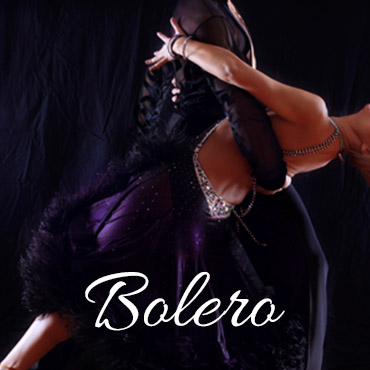
Bolero
Originally a Spanish dance, Bolero is a very slow type of Rumba rhythm. Its Style blends movements from Tango, Rumba and Waltz to make it one of the most sexy and unique of the popular social dances today.
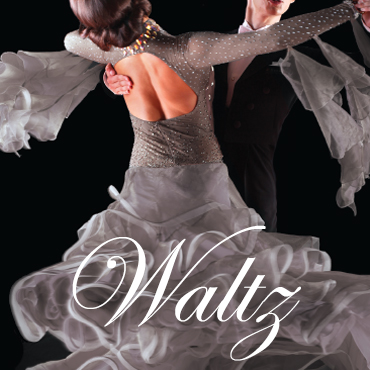
Waltz
The real origin of the Waltz is rather obscure but, the Waltz can be traced back as far as 400+ years. The Waltz regained its real popularity in the 20th Century when the Waltz blossomed out as the Hesitation Waltz in 1913. Until the development of the hesitation, couples had waltzed in one direction until dizzy and then reversed the spin until ready to drop. The Waltz had degenerated into an endurance contest. The addition of the Hesitation resulted in the Waltz as it is done today. The slow Waltz was once known as the Boston Waltz. Today the slow Waltz is the go to dance for weddings, anniversaries and other formal occasions.
A form of Swing popularized during the 1950’s in California. The basic steps of the Balboa take up a small amount of space. It is danced mostly in the close embrace and is led with a full body connection. Dancers execute fast and elaborate footwork while keeping their torsos close together. Communication between the lead and follow is accomplished through weight shifts, which most viewers cannot even see. For this reason, the Balboa is often considered more of a dancers’ dance than a spectators’ dance. Balboa is a restrained or introverted dance, with most of the movement occurring below the knees. This is an eight-count dance. It involves chaining two-step movements together into groups of eight-count patterns, while shuffling your feet on the dance floor. It appeals to many dancers because of its variations on turns, kicks, and twirls that allow the lead to show off his partner’s legs—an effect that is particularly dramatic when the follow is wearing a skirt and high heels. You can dance the Balboa to a wide variety of tempos: fast music (over 300 beats per minute) or slow music (under 100 beats per minute). Dancing to slower music allows the dancers more time for the intricate footwork and variations that make this dance so popular.
Originally a Spanish dance 3/4 time, it was changed in Cuba initially in 2/4 time then eventually in 4/4. It is now present as a very slow type of Rumba rhythm. The music is frequently arranged with Spanish vocals and subtle percussion effect, usually implemented with Conga or Bongos.
From the less inhibited nightclubs and dance halls the Mambo underwent subtle changes. It was first known as triple Mambo, and then peculiar scraping and shuffling sounds during the tripling produced the imitative sound of Cha, Cha, Cha. This then became a dance in itself. Mambo or triple Mambo, or Cha Cha, as it is now called, is but an advanced state in interpretive social dancing born of the fusion or progressive American and Latin music.
Originated in the early 1920 s in illegal drinking places during the time of prohibition. The combination of a particular type of Jazz music and the highly polished, slippery floors of the Speakeasies gave rise to an in and out flicking of the feet which essentially characterized the dance. It was theatricized and embellished with typical Vaudeville moves in a Ziegfield Follies production in 1921. It has since been feature in many films and theater productions, its most blatant revival being its utilization within the Broadway musical The Boy Friend.
A Country Western dance enjoyed throughout the United States and elsewhere for its enthusiastic music and energetic movements. Characteristic movements include kicks, stomps, shuffles, and turns in place or traveling around the room. The man and the lady generally are in shadow position, and they use the same foot on the same beat of music throughout their patterns.
Created in 1912 by Harry Fox, the Fox Trot was the first dance that permitted people to hold each other closer than arm’s length. If you think the term ‘dirty dancing’ was a product of the 80s, think again. The Fox Trot was at first to be tagged ‘indecent behavior’. Today it’s still the most popular of all social dances. Some people refer to the Fox Trot as the ‘Slow Dance’ or the ‘Two-Step’, or a ‘Conversational Dance’ because of it’s closeness and conversation ability at the same time. The Fox Trot is good for developing ‘smoothness’ and ‘ease of movement’.
A number of similar style disco dances which had its beginning in the mid 1970 s and enjoys some continuing popularity as a swing style today. The record Do The Hustle by Van McCoy, was followed by the move Saturday Night Fever . This movie portrayal of partner dancing by John Travolta to the popular beat of top selling music from the Bee Gees and the introduction to America of the Discotheque setting, popular for some years in Europe, took America by storm. Flashing lights, mirrors everywhere, loud throbbing beat and high fashion were in. Large numbers of popular Discos sprang up in every city and everyone was waiting in line to dance.
A toned down version of a Lindy Hop, which is faster and happier than the American Rock n Roll Swing.
International competitive Swing dance with elements of the Lindy Hop and Jitterbug. Characterized by up tempo single time music danced with triple steps done primarily on the toes with very lively movement.
This latest dance crazy has its roots from the Northeast Coast of Brazil. The exciting look of this dance on European television took the Continent by storm in the late 80’s. Introduced to the U.S. by Arthur Murray personnel, its lighthearted Brazilian/Caribbean beat combines the flavor of the Samba with the sultry passion of the Rumba.
- The authentic, traditional dances that fall lately into the domain of the folkloric dances, many of which vary from region to region, and generally involve a rhythmic character as opposed to a set of choreographic distinctions.
- The standardized expression of popular Latin dances embraced by cultures other than Hispanic, such as: Cha Cha, Samba, Rumba, Bolero, Mambo, and Paso Dole. These dances are danced both on a social and competitive level.
Named by Ray Bolger after Colonel Lindbergh s flight across the Atlantic. This Swing had as much getting into the air as possible. However, the violently acrobatic style use for exhibitions is not the same as the quietly rhythmic Lindy enjoyed by good dancers on the ballroom floor. The rhythmic patterns takes place over two measures of music. The more acrobatic version were limited to ballrooms of which the most famous was the New York s Savoy Harlem. At one time the Jitterbug included the Charleston, Black bottom, Shag and the Lindy Hop. It has now been consolidated in Lindy Hop in the Eastern United States and the West Coast Swing on the West Coast.
A choreographed series of steps performed by a group of dancers assembled inline, which involves a variety of walking, kicking, swiveling or turning movements done in unison to a many different recordings, each song having its own unique patterns. Line Dancing has become a part of all types of social gatherings sometimes with the help of a DJ s direction. It started in the late 1970 s after Saturday Night Fever disco line dancing became popular. Additionally, it was great for people without partners. Line Dancing is performed by individuals, groups or dance teams and is danced all over the world. Some of the more popular line dances used at parties in recent times are: the Chicken Dance , New York, New York , the Electric Side and the Cotton-eyed Joe . The most recent addition to this list is the Macarena.
The fusion of Swing and Cuban music produced this fascinating rhythm and in turn created a new sensational dance. The Mambo could not have been conceived earlier since up until that time Cuba and American Jazz still were not wedded. The Victor records of Anselmo Sacaras entitled Mambo in 1944 were probably the beginning and since then other Latin American band leaders such as Tito Rodriquez, Pupi Campo, Tito Puente, Perez Pardo, Machito, and Xavier Cugat have achieved styling of their own and furthered the Mambo craze. The Mambo was originally played as any Rumba with a riff ending. It may be described as a riff or a Rumba with emphasis on the fourth beat in 4/4 time. Originally played with some musicians in 2/4 time with a break or emphasis on 2 and 4. Native Cubans or dancers without any training would break on any beat. Find out more about all the dances we teach!
This is 2/4 time with syncopation of the first beat interpreted by the dancers as slight limp. It became popular in 1957. The Merengue is all about the hips. The hips of the couple move in sync during the entire dance. This seductive hip movement comes from the bending and straightening of the knees, not from twisting. Partners keep their upper bodies erect and walk sideways or circle each other in small, limping steps (called Paso De La Empalizada). The dancers can do slow and separate turns without letting go of their hands or by letting go of just one hand. It is thought that the Merengue’s limping steps were originally performed to honor an injured war hero. Another possibility is that the dance grew out of the slave communities of the Caribbean, where slaves were chained together and forced to walk with a limp.
In 1955 Eduardo Davidson, a Cuban Colombian introduced the Marencumbae, a Colombian dance in Cuba. The Original music was called La Pachanga with Marencumbae underneath it. He made up patterns for this dance by watching musicians keeping time on the band stand. It was then introduced into the United States to play for the Cuban Embassy’s annual affair at the Waldorf. He was simultaneously booked at the Palladium. He had with him two terrific boy dancers. These boys came out as part of the show and did Cha Cha’s with swiveling and trucking movements. People had never seen this type of Cha Cha before and asked what it was. Since Fajardo had a Charanga band and spoke no English, his reply was Charanga. After a big conference of dancers in 1956 the Pachanga was introduced, but they found out that the Charanga and the Pachanga were interchangeable. So instead of some calling it Charanga and others Pachanga, they decided that the music would be called Charanga and the dance Pachanga. A Charanga band is the typical Spanish Danzon type band that only played in salons, and theothers that played far out and wild were called ‘orchestra typical.
The Spanish March or One Step. It makes an especially good exhibition routine when the man styles his body movements to look like a bullfighter s and leads his partner in and out of the patterns as if she were a cape. It is usually in 2/4 time.
A fast Fox Trot during which the dancers may use many quick steps set against the figure called open box. It was popular in the larger ballrooms where dance space was not a problem.
This dance was introduced to society in 1844. Every now and then it is revived because of its boisterous charm. It was supposed to have been originally created by a Bohemian girl. The basis step consists of a preparatory hop followed by a chasse done first to the left then to the right. Curiously enough, it reappeared in the 1940 s in the Cha Cha as one of the more popular steps. Still danced quite often throughout the country with particular popularity in the German and Hispanic communities.
The English version of the Fast Fox Trot, which was quick hopping steps set in the smoother gliding figures. It is very popular in Europe as a competition dance. It ranks among the big five , the other four being the Slow Fox Trot, the Waltz, the Tango, and the Viennese Waltz.
A popular form of the Swing or Lindy Hop. Began as dance in the 1950 s who were fans of artists like Bill Haley and The Comets followed by Elvis Presley. It continued into the 1960 s with artists like the Beatles.
This is a favored name for a type of Latin music, which for the most part, has its roots in Cuban culture and is enhanced by jazz textures. The word, Salsa, means sauce denoting a hot flavor and is best distinguished from other Latin music styles by defining it as the New York sound developed by Puerto Rican musicians in New York. The dance structure is largely associated with mambo type patterns and has a particular feeling that is associated mainly with the Clave and the Montuno.
The Brazilian dance was first introduced in 1917 but was finally adopted by Brazilian society in 1930 as a ballroom dance. It is sometimes referred to as a Samba, Carioca, a Baion or a Batucado. The difference is mostly in the temp played since the steps in all three dances are very similar. The style is to bounce steadily and smoothly in 2/4 meter. They say that the late Carmen Miranda introduced the Samba to the United States in 1939.
A dance similar to the Polka. It is characterized by the clapping of hands after having taken three hopping steps. It is written in 4/4 time.
Originated in the late 30’s on the shores of Myrtle Beach, Shag has gained such a following that it is now the official state dance in South Carolina. Carolina Shag became known as ‘Beach Swing’ and was done to ‘Beach Music’ , which was basically old Motown, Blues and Oldies music. The Shag is done primarily in the Southern States such as Florida, the Carolina’s, Virginia and Georgia. The Carolina Shag has a very smooth, connected feel with your partner and the music.
An ever popular blend of several African American dances, which include Lindy and Ragtime Jazz and Blues, was well as all the other dance music to accompanying dances of the past ninety years. Today it generally refers to the ballroom and nightclub version, which is based on two slow and two quick counts or the slow and two quick counts of rhythm dances.
(Continental/English see Tango: International) There are essentially three types of Tango: Argentine, American and International Style. Argentine Tango (Arrabalero): A dance created by the Gauchos in Buenos Aires. It was actually an attempt on their part to imitate the Spanish dance expect that they danced it in a closed ballroom position. The Tango caused a sensation and was soon to be seen the world over in a more subdued version. American Tango: Unlike the Argentine Tango, in which the dancer interprets the music spontaneously without any predetermined, slows or quicks, the American Tango features a structure which is correlated to the musical phrasing. The dance is executed both in closed position and in various types of extravagant dance relationships, which incorporate a particular freedom of expression that is not present in the International Style. International Tango: This is a highly disciplined and distinctively structured form of the Tango which is accepted worldwide as the format for dancesport events. The dancers remain in traditional closed position throughout and express both legato and staccato aspects of the type of music appropriate to this style.
The Two-Step is a simple dance, more ore less a double quick march with a skip in each step done as rapidly as the couple can go forward, backward and turning. Still quite popular in many areas of the country. Two-Step is a Western dance whose popularity has spread all over the United States.
With such wonderful composers as Johann Strauss and others, the Waltz became more and more refined. The steps became smaller with the turns smoother and more compact. Adding the graceful lilt of the flowing skirts, we have today s Viennese Waltz. It is the fastest of the Waltz tempos.
The real origin of the Waltz is rather obscure, but a dance of turns and glides, leaping and stomping appeared in various parts of Europe at the end of the 17th and beginning of the 18th Century. In Italy it was the Volta, France had its Volte, Germany the Weller, and Austria had its Landler. These were round dances but at the end of the dance itself there was a short period in which the circle would break up into couples who would whirl madly around and round and finish with a jump in the air. In the Landler the hopping gave way more to a gliding motion and that is why it is considered the forerunner for the Waltz. The Waltz can be traced back as far as 400+ years. The Waltz regained its real popularity in the 20th Century. The Waltz blossomed out as the Hesitation Waltz in 1913. Until the development of the hesitation, couples had waltzed in one direction until dizzy and the reversed until ready to drop. The Waltz had degenerated into an endurance contest. The Hesitation resulted in the Waltz as it is done today. The slow Waltz was once known as the Boston Waltz. Today the slow Waltz is the American Waltz, English Waltz, or the faster Viennese Waltz.
A stylized Swing dance popular west of the Mississippi from Kansas to California. Danced to slow to medium Swing or Disco music and characterized by slot movements, taps and shuffles, coaster steps, and push and pull action of the dancers.
